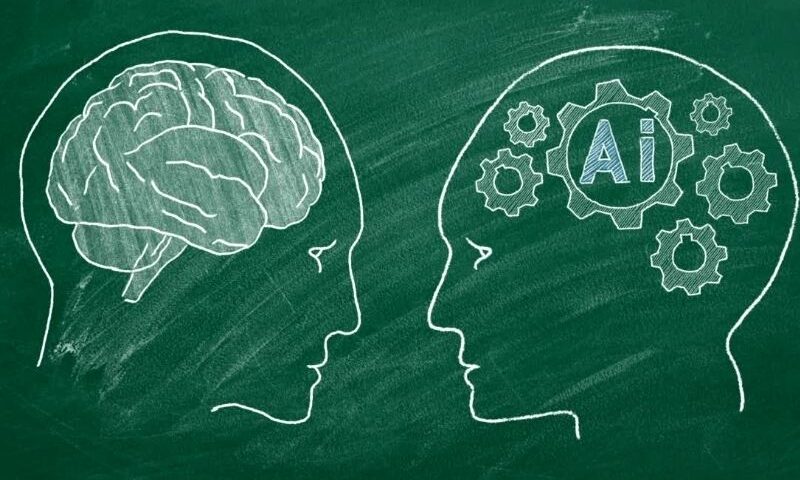In this age of smart machines and AI, the importance of human editing in AI content creation cannot be overstated. AI can spit out words at a dizzying pace, but it lacks the finesse only a human editor brings. I dive deep into this unseen hero’s role. Yes, machines offer us heaps of content, but they miss out on the nuance and flavor that I, as a human editor, inject into every piece. From spotting pesky errors to keeping the narrative straight and true, I ensure that our stories resonate and connect. It’s about striking that golden balance – where AI provides the groundwork, but human expertise paints the soul. Follow along as we unpack the essentials of this craft, where I refine and sharpen AI’s output into communication that rings authentic and true.
The Indispensable Role of Human Editors in AI-Generated Content
Identifying and Correcting Errors Common in AI Writing
As an expert in AI content creation, I’ve seen how machines can slip up. They might miss small errors, choose the wrong words, or even mix up facts. That’s where I step in. My job starts where AI stops. I find and fix those slips, so the final piece reads just right.
First, I ask myself, “What’s off here?” I read the AI work carefully. Maybe it’s a small grammar issue or maybe the AI got a fact wrong. When I spot an error, I correct it. This simple step boosts the content’s quality more than you might think. It’s like weeding a garden; taking out the mistakes lets the truth shine.
But it’s more than fixing what’s broken. I look for ways to make the AI’s writing smoother, clearer, and more like something a person would really say. I add that human touch, turning cold text into warm conversation. This is crucial for keeping readers hooked and conveying the message as intended.
Upholding Authorial Voice and Preserving Narrative Integrity
Now, think about your favorite book or article. What hooks you? It’s the voice, the flow, the story it tells. AI can start a story, but it often can’t give it that spark—that human feeling we all crave in a good tale. That’s where I shine. I keep the writer’s voice alive in the AI text.
I dig into the narrative, asking “Does this sound right?” If something sticks out, I reshape it. I keep the story’s thread tight and the writer’s style clear. This respect for the author’s voice keeps the message pure. It’s like tuning an instrument; the right adjustments make the music sing.
Human touch in AI content isn’t just nice. It’s needed. It brings readers the accuracy, warmth, and depth they deserve. In the dance of words between humans and machines, I lead, ensuring the rhythm is just right. My role is clear: I turn AI drafts into trusted tales that stand tall.
Every line, every word counts. So I keep my focus sharp and my edits sharper. That’s how we ensure the content not only sounds human but feels human too. After all, that is what truly connects with people. It’s not just writing; it’s building bridges with words. And there’s no AI yet that can do that alone.
Balancing Artificial Intelligence and Human Expertise
Addressing AI’s Limitations with Editorial Insight
Artificial intelligence brings speed and efficiency to content creation, yet it lacks the human touch. Machines often miss the subtle details that make writing truly shine. Human editors are crucial here. They catch errors AI overlooks and make sure the content stays true to its purpose.
Imagine AI as a fast car. Sometimes it stays in its lane, speeding towards the finish. Other times, it veers off course. Editors are like expert drivers. They keep the car on track, ensuring it reaches the right destination safely, and on time.
Incorporating Human Creativity to Enhance AI Personalization
AI struggles with understanding emotions and context. That’s where human creativity steps in. Editors add warmth and personality, turning bland AI text into engaging stories people love to read. They know what readers feel and think. This knowledge lets them shape AI-generated content into something special.
Editors are like artists. They use words as their paint, and the blank page as their canvas. AI may provide them with the basic colors, but it’s the editors who blend them into a masterpiece. This balance of machine efficiency and human artistry is the future of writing.
AI helps us move fast, but human editors make sure we don’t break things along the way. Together, they create content that is both accurate and wonderfully human.
Elevating AI Content Quality through Rigorous Review Processes
Fact-Checking and Verifying AI Content for Accuracy
AI creates many stories, but it can miss facts. A human eye catches these slips. My job is to check what AI writes. I dig deep to make sure it’s all right. I ask, is this fact true? If not, it’s my cue to fix it. Your trust is on the line. I look at every date, name, and number. I make sure they’re spot on. This is how we keep AI honest. You read content that’s correct. That’s my promise to you.
Ensuring the Human Touch through Sensitivity to Context and Emotion
Words can make you feel happy or sad. AI tries, but sometimes it misses the mark. As a human, I get how important feelings are. When I review AI work, I listen to the heartbeat of the text. Does it share joy or comfort? It should. If not, I help it to. I read each line and ask, does this feel right? My touch makes the story ring true. I want you to read something that moves you. This is the magic I bring to AI words.
In the world of AI content, the human role is like the sun to the Earth—it’s what keeps it alive and warm. AI can give a draft fast, but without human help, it’s just a bunch of words. I’m there to add color, life, and a real person’s care. Think of me as a gardener. AI plants the seeds. I water them and pull out the weeds. What grows is something you’d want to show to a friend. It’s a story that’s true, rich, and full of life. This partnership, my friends, changes the game in AI content.
With my hands, AI writing turns from cold to warm. Together, we give you stories that are right, full of heart, and speak to you. This is my duty, and I own it with pride. It’s more than just fixing up grammar and typos. It’s about making sure you can trust what you read. It’s about connecting with you. When AI and I work hand in hand, magic happens. And that’s what I promise you—content that’s not just smart but also has a soul.
Ethical Editing: Safeguarding the Authenticity of AI Writing
Maintaining Accountability and Combating Bias in AI-Generated Articles
We all know machines make mistakes. That’s true for AI that writes articles, too. I often see errors, big and small, in AI work. As a human editor, my job is to spot and fix these blunders. Why? Because every reader deserves the truth, clear and simple.
For starters, AI sometimes gets facts wrong. I check each claim to ensure it’s right. If it’s not, I correct it. This keeps readers from being misled. I also watch for strange word choices. We’ve all seen them—words that sound off. They confuse readers. We don’t want that.
Bias is another big issue. AI doesn’t mean to, but it can show favor. I look out for this, making sure the content is fair and balanced. This secures the trust of our readers.
By cutting out errors and bias, I keep AI writing honest. Users know they can rely on our content. They sense the human effort behind the tech. And that matters.
Collaborative Efforts to Improve AI Writing Tools and Methods
Beyond editing, I team up with AI developers. We work together to better the writing tools. We want AI to make fewer mistakes from the get-go.
Here’s how it works: I give feedback on AI errors. The AI team learns from this. They tweak the AI’s rules and skills. Over time, the AI writes better. Fewer errors slip through.
But that’s not all. I also share insights on human touch. This includes tone, style, and emotion in writing. AI needs to grasp these to connect with readers. Without these touches, writing can feel cold and robotic.
So yes, we’re making AI smarter and more sensitive. We’re pushing it to understand the nuance and feel of real human chat. With our combined skills, each AI article gets a bit more life. And that’s a win for everyone.
This partnership reflects our commitment to quality. It’s about respect for the reader’s need for clear, correct info. It’s a promise that we bring our best to the table every time.
Each word and line is a piece of trust we build. With keen eyes and an open dialogue with tech teams, I make sure we keep that trust strong.
From spotting a misplaced fact to sharing wisdom on narrative flow, there’s a whole lot that goes into ethically editing AI content. It’s not just about grammar or spelling—but about the message and its impact. It’s about deep care for the craft, the audience, and the truth.
In sum, ethical editing isn’t just a task. It’s a vital part in keeping AI writing accurate and meaningful. It’s a blend of art and science, tech and heart. It’s what makes sure the stories AI tells are not just well-crafted, but also worthy of your time and trust.
In this post, we dove deep into how key human editors are in the AI writing world. We saw how they fix mistakes AI often makes and help the writing sound real, keeping the story true. We talked about making sure AI and humans work well together. Our smart human touch tweaks AI so it feels more personal and creative.
We also learned that tough checking is a must to keep AI writing accurate and sensitive to feelings and context. Lastly, we discussed keeping AI writing honest and fair. We work together to make AI better at writing.
To sum it up, even the smartest AI can’t match the insight a human editor brings. They turn a chunk of AI text into something you would actually want to read. Editors are crucial to making sure what you read is not just smart, but also feels just right.
Q&A :
Why is human editing essential in AI-generated content?
Artificial Intelligence has made significant strides in content creation, but it lacks the nuanced understanding and creativity that human editors bring to the table. Human editing is crucial to refine AI content, as it ensures the content is contextually appropriate, factually correct, and engaging for the intended audience. Editors also bring a level of empathy and ethical considerations that AI cannot replicate.
How can human editors improve the SEO of AI-generated content?
Human editors play a vital role in optimizing AI-generated content for search engines by infusing the content with SEO best practices. They can strategically incorporate keywords, meta tags, and alt text that AI may not judiciously employ. Human editors also enhance readability and user engagement, which are key factors in SEO rankings, by tweaking sentence structures and ensuring the content flows naturally.
What are the limitations of AI in content creation that human editing can address?
AI content generators are rapidly evolving, but they still face limitations such as a lack of contextual understanding, difficulty grasping tone and style nuances, and potential biases in the data they were trained on. These limitations can lead to content errors or insensitivities that could be off-putting to readers. Human editors can address these issues by revising and adapting content to better align with the intended message and audience expectations.
Can AI replace human editors in content creation?
While AI can streamline the content creation process and handle repetitive tasks efficiently, it is unlikely to replace human editors entirely. AI systems may still miss subtleties of language, cultural references, and emotional resonances that human editors can understand and convey. Human oversight is necessary to maintain a high content quality standard that resonates with human readers on a deeper level.
In what ways does human editing contribute to the credibility of AI-generated content?
Human editing significantly enhances the credibility of AI-generated content by fact-checking and ensuring that the information is accurate and reliable. Editors can also tailor the content’s tone to be authoritative and trustworthy, whereas AI might not adjust for such nuances. By eliminating errors and inconsistencies, human editors increase the content’s professionalism, making it more credible to its audience.






